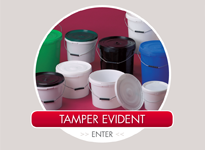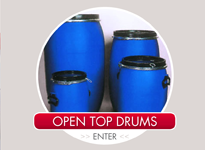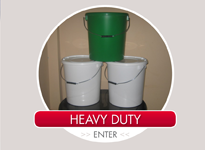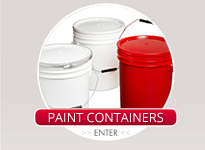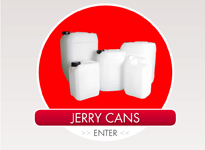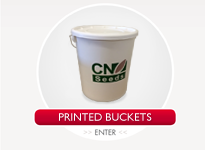

All you need to know about food grade containers
January 14, 2014 at 5:12 PM
 Many people now use plastic containers for food storage and preparation. For instance, some folk like to buy certain foodstuffs in bulk - which can be cheaper - then store the excess in a plastic container; others even brew beer in larger plastic buckets.
Many people now use plastic containers for food storage and preparation. For instance, some folk like to buy certain foodstuffs in bulk - which can be cheaper - then store the excess in a plastic container; others even brew beer in larger plastic buckets.
However, as with anything that involves food designed for human consumption, great care must be taken to ensure the plastic container is made of material designed for use with such foods. Some plastics are simply not designed for that use, with chemicals from the plastic leaching into the food. So - how can you tell if the plastic bucket you’re using is airtight, tamper proof, or else made from material safe for storing food?
Within the “tamper evident” page of this H & O website, you will find a wide range of plastic containers specifically designed for use with food. However, we fully appreciate you may already have containers you would like to re-use, so in the virtuous cause of health and safety, we thought we should provide you with a useful 10-point guide to checking for the food-grade status of your container:
- Firstly, you will no doubt already be aware of the cryptic hieroglyphs printed on your plastic bucket. This is not to do with Tutankhamun, but rather a standardized system denoting the food-grade standard of your container. A symbol of a “cup and fork”, for instance, means the container is suitable for storing food.
- A “snowflake” denotes you can freeze food within the container.
- Perhaps not surprisingly, a symbol of “dishes in water” means the container is dishwasher-safe.
- Similarly, “radiating waves” indicates that you can use the plastic container in a microwave.
- If the plastic bucket is pricier than a standard bucket, there’s every chance it has been made out of higher-standard, food-grade plastic. However… always make sure you check these food-grade symbols to make sure.
- Now turning the container over to look at the bottom, you will also find a number - between one and seven - stamped within some arrows. This is the recycling number and in general terms, the numbers one, two, four, and five indicate the plastic is food grade.
- However, to go into a little more detail: the number two denotes high-density polyethylene (HDPE). HDPE is the one of the most stable forms of plastic and therefore perhaps the best for storing food, long term. Most plastic containers specifically designed for food will be made from HDPE.
- If you’ve found the numbers one, four, or five, this refers to various types of food grade plastic: PETE, LDPE, and polypropylene (PP) respectively.
- The number seven will possibly denote bio-plastic; in other words, a container made from plant-based material, such as corn. These synthesised plastics are non-reactive and can therefore be used for storing food.
- Be careful around re-using plastic containers. Even if they include any of the numbers and signs explained here, only use such containers for food storage if you are explicitly sure of their provenance, and that they haven’t been put to service for anything else.
If any doubt, buying a new container from H & O’s tamper evident range will obviously ensure you can feel safe in the food grade quality of the plastic.
Add Pingback


